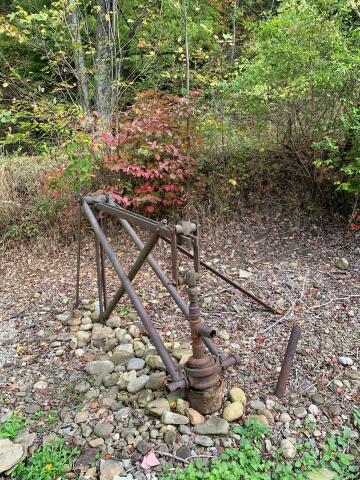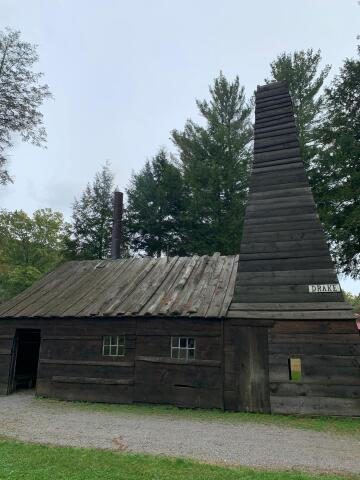Nestled in the scenic Venango County of northwestern Pennsylvania, Titusville is a small town with a monumental legacy. It is here, along the banks of Oil Creek, that the first commercial oil well was drilled in 1859 by Edwin L. Drake, forever changing the course of energy history.
The Drake Well Museum, located 3 miles south of Titusville, stands as a testament to this groundbreaking achievement. For professionals in the energy sector, a visit to this museum is not just a trip down memory lane but an essential pilgrimage to understand the roots of modern energy production.
The Significance of Titusville
Titusville is situated in a region rich with natural oil seeps, which had been known to Native Americans for centuries. The indigenous people used the petroleum collected from surface seeps for medicinal purposes, recognizing its healing properties long before the advent of modern medicine. The area’s geological features made it an ideal location for oil extraction, with oil trapped in sandstone reservoirs beneath the surface.
The World Before Commercial Oil Exploration
Before the dawn of commercial oil and gas exploration, the world in 1859 was vastly different. The global population was around 1 billion, with most people living in energy poverty and a life expectancy of less than 40 years. The US had been independent for more than 80 years, and Britain was burning coal, wood, and anything flammable to fuel the Industrial Revolution.
Coal was the dominant source of energy, powering factories, trains, and heating homes. However, for lighting, whale oil was the primary source. Whale oil, particularly from sperm whales, produced a clean, bright flame and was highly sought after. This demand led to the near extinction of the whale population, making whale oil increasingly scarce and expensive. Many families struggled to afford lighting, plunging them into darkness as prices soared.
The Birth of the Modern Oil Industry
The story of the Drake Well begins in the mid-1850s when George Bissell and other East Coast speculators formed the Pennsylvania Rock Oil Company, later known as Seneca Oil Company when reorganized by James Townsend.
They believed that oil could be extracted from the ground using drilling techniques similar to those used for salt wells. Drake, a former railroad conductor, was hired to oversee the drilling operations in Titusville. Despite having no prior experience in drilling, Drake’s determination and innovative thinking led to a historic breakthrough. He hired Uncle Billy Smith, a salt driller, to manage the operations.

Drake faced numerous challenges, including the collapse of the well walls due to groundwater seepage. To overcome this, he devised a method of driving a cast iron pipe into the ground to stabilize the wellbore. On 27 August 1859, after drilling to a depth of 69.5 ft, Drake struck oil. This well, known as Drake Well, produced approximately 20 BOPD initially, marking the birth of the modern petroleum industry.
The Impact of Drake’s Discovery
Drake’s successful drilling operation had far-reaching implications. It provided a new, abundant, and cheaper source of energy that quickly replaced whale oil for lighting. This shift not only saved the whale population but also made lighting affordable for many households. The availability of petroleum spurred further investment in oil drilling, refining, and marketing, laying the foundation for the global oil industry we know today.
Cities sprang up around new oil discoveries, with many wildcatters testing their luck. While some towns thrived, others became ghost towns. Unregulated drilling left behind orphaned wells. Over time, significant advancements were made in safety, regulation, and technology.
Today, the world consumes over 100 million BOPD, along with substantial amounts of natural gas. Energy is essential for modern life, and hydrocarbons play a crucial role in providing a comfortable standard of living. Society has evolved significantly thanks to Drake’s entrepreneurial spirit, with life expectancy nearly doubling due to a more energized world.
The Drake Well Museum Experience
Visiting the Drake Well Museum offers a comprehensive look at the early days of the oil industry. The museum features a replica of the original Drake Well, complete with an engine house and derrick. Exhibits include historical artifacts, photographs, and interactive displays that bring the story of Drake’s pioneering efforts to life. The museum also highlights the broader impact of the oil industry on society, technology, and the environment.

Conclusion
For energy professionals, the Drake Well Museum is more than just a historical site; it is a place of inspiration and reflection. Understanding the challenges and triumphs of early oil exploration provides valuable insights into the evolution of energy production and the ongoing quest for sustainable energy solutions. By visiting the birthplace of the modern oil industry, professionals can gain a deeper appreciation for the innovations that have shaped our world and continue to drive progress in the energy sector.
For Further Reading
How the American Oil Industry Got Its Start, Time Magazine.
The Drake Oil Well, The American Society of Mechanical Engineers.
Edwin Drake and the Oil Well Drill Pipe by U. Davé, Pennsylvania Center for the Book.


